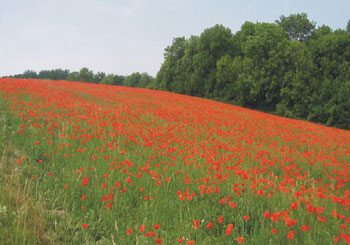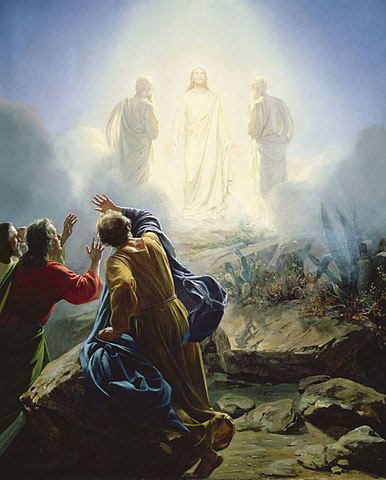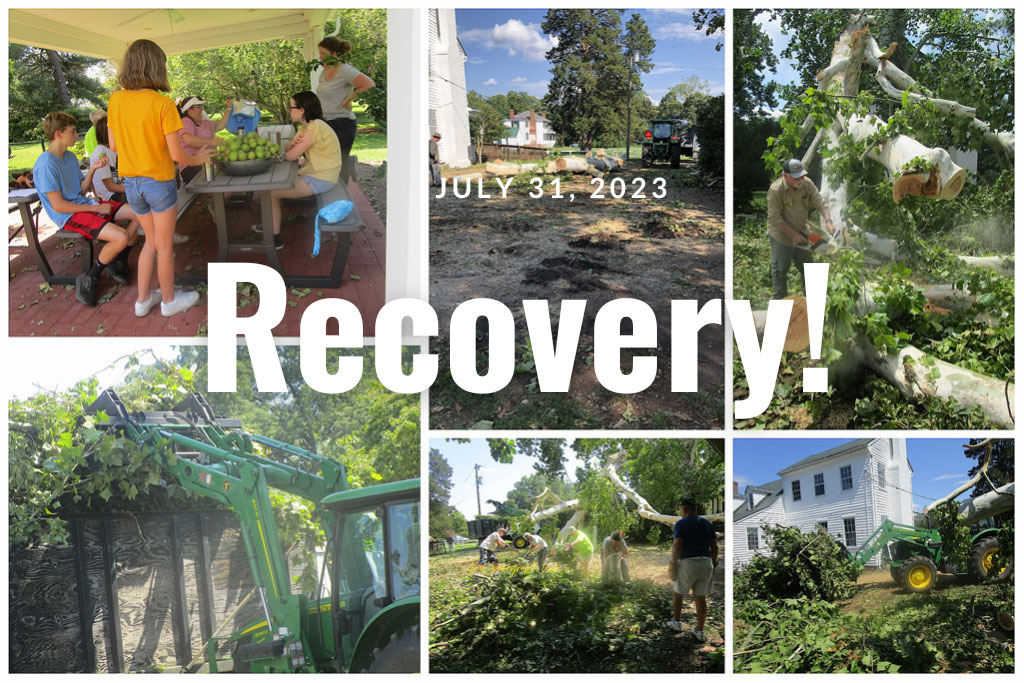2023 Sun Aug 6
Videos, Transfiguration, Aug. 6, 2023
Sycamore Tree Aug 6 after the cleanup this past week from a storm on July 29
Opening Hymn – “O Wondrous type!”
Gospel and Sermon – Rev. Catherine Hicks
Bulletin, The Transfiguration, Aug. 6, 2023
Click here to view in a new window.
Sunday Links, Aug. 6, 2023, Transfiguration

Interesting pew!
“World War I Poetry- A Moveable Feast
World War I Poetry- A Moveable Feast
We try to understand war through memorials, the written word and art among other mediums. In particular, poetry flourished in this war among young soldiers. World War I saw a number of fine poets on the battlefields emerge. Here are sites that discuss these contributions:
1. The Lost Poets
2. Hanover History Dept
3. War Poetry website
4. The Digital archive
5. British War Poetry
The most famous World War I poem is "In Flanders Fields"

Ask Yourself -What are you grateful for?
By Donna Britt July 21, 2020 at 12:42 p.m. EDT
A few years back, I was headed to the grocery store to buy a lottery ticket whose jackpot was a half-billion dollars when I ran into my neighbor Kathy. Asked if she, too, was joining the throngs buying tickets at gas stations and convenience stores, this happily married mom and grandma replied:
“I already feel like I hit the lottery.”
Her response was a wonderful example of the ancient spiritual principle that anyone looking for uplift in an anxiety-filled world might consider. Ask yourself a simple question:
What are you grateful for?
The Transfiguration with Desmond Tutu
The Transfiguration is a transformation and emphasizes that the mission of Jesus in the way of the cross. We celebrate this event on Aug. 6

“Transfiguration” by Carl Bloch (1872)
From Luke – “Jesus took with him Peter and John and James, and went up on the mountain to pray. And while he was praying, the appearance of his face changed, and his clothes became dazzling white. Suddenly they saw two men, Moses and Elijah, talking to him. They appeared in glory and were speaking of his departure, which he was about to accomplish at Jerusalem. Now Peter and his companions were weighed down with sleep; but since they had stayed awake, they saw his glory and the two men who stood with him. Just as they were leaving him, Peter said to Jesus, “Master, it is good for us to be here; let us make three dwellings, one for you, one for Moses, and one for Elijah” —not knowing what he said. While he was saying this, a cloud came and overshadowed them; and they were terrified as they entered the cloud. Then from the cloud came a voice that said, “This is my Son, my Chosen; listen to him!” When the voice had spoken, Jesus was found alone. And they kept silent and in those days told no one any of the things they had seen.
In his book, God Has A Dream: A Vision of Home for Our Time, Desmond Tutu tells about a transfiguration experience that he will never forget. It occurred when apartheid was still in full swing. Tutu and other church leaders were preparing for a meeting with the prime minister of South Africa to discuss the troubles that were destroying their nation. They met at a theological college that had closed down because of the white government’s racist policies. During a break from the proceedings, Tutu walked into the college’s garden for some quiet time. In the midst of the garden was a huge wooden cross. As Tutu looked at the barren cross, he realized that it was winter, a time when the grass was pale and dry, a time when almost no one could imagine that in a few short weeks it would be lush, green, and beautiful again. In a few short weeks, the grass and all the surrounding world would be transfigured.
As the archbishop sat there and pondered that, he obtained a new insight into the power of transfiguration, of God’s ability to transform our world. Tutu concluded that transfiguration means that no one and no situation is “untransfigurable.” The time will eventually come when the whole world will be released from its current bondage and brought to share in the glorious liberty that God intends
RECOVERY!
Original article on the damage

From Catherine, July 31, 2023- “Johnny and Cookie Davis, and Tommy Hicks, a farm truck and a tractor, and a large crew of many other parishioners and neighbors were able to clear the back of the church of the debris from the crown of the tree that had broken off and ended up in the driveway behind the church. Thanks to all of you who helped with this project.”
Most of the work involved a four-part process:
- Gathering.
Parishioners gathered loose branches and piled them up. We had several piles going at a time. This was a task everyone could help with.
- Cutting
Johnny Davis and Larry Saylor brought chain saws to help this process as well as cut debris too large for the truck.
- The tractor came by to grab the gathered portions of the cleared portions and pieces of the wood. It was an amazing piece of machinery that could handle logs and branches with leaves and anything else it could trap.
- The tractor gatherings would be taken to the truck which then would be dumped. To get all of it in, chain saws were used to cut the wood.
During the day, there were obstacles that had to be overcome. The main one was what to do with the main section which was in the shape of a tripod. They tried to move it using straps but they broke. The solution was to cut individual pieces using the chain saw
It wasn’t all work. There were benefits to the day. It was a day the parish could bind together in a common task with additional help from the community. Off and on we had more than 30 people of all ages. This was good hospitality outside of the Sunday services that involved all ages. Luckily the heat was much lower than the previous week!
One benefit was noticing a bumper crop of pears in the tree beside the parish house. The youth gathered them and put them in a bowl. What a blessing from nature gives amidst the cleanup of what nature took away. This tree may have ome from the time of Rev. Sigismund Stribling Ware (“Sig”) when he preached at St. Peter’s from 1888 to 1918. His wife planted fruit trees at the church. This may be the only one left.
We had one of two estimates for the remaining tree. The contractor felt like the tree would revive with trimming of the damaged portions. The best news!
Photo galleries displayed in tabs
Videos displayed in tabs
